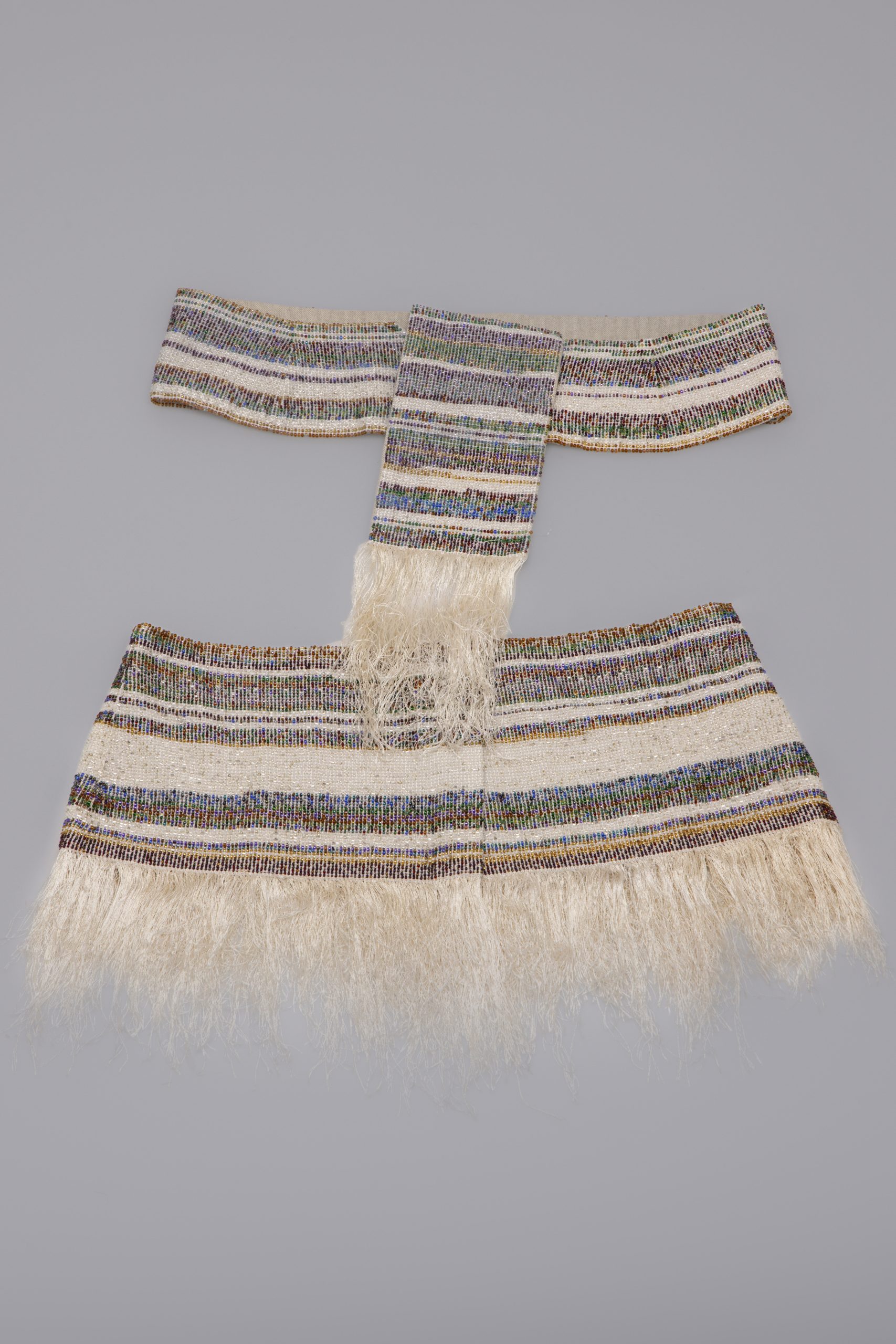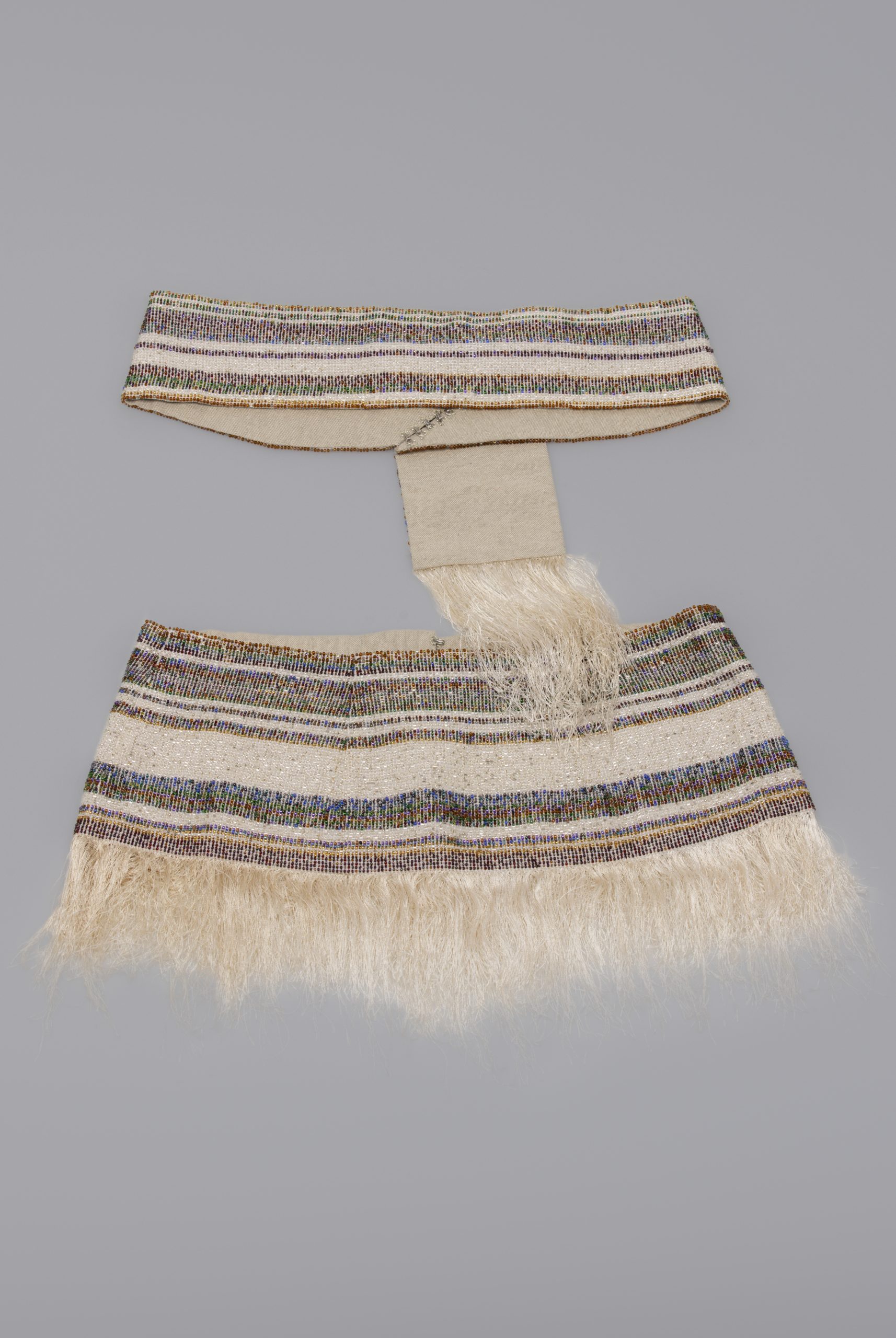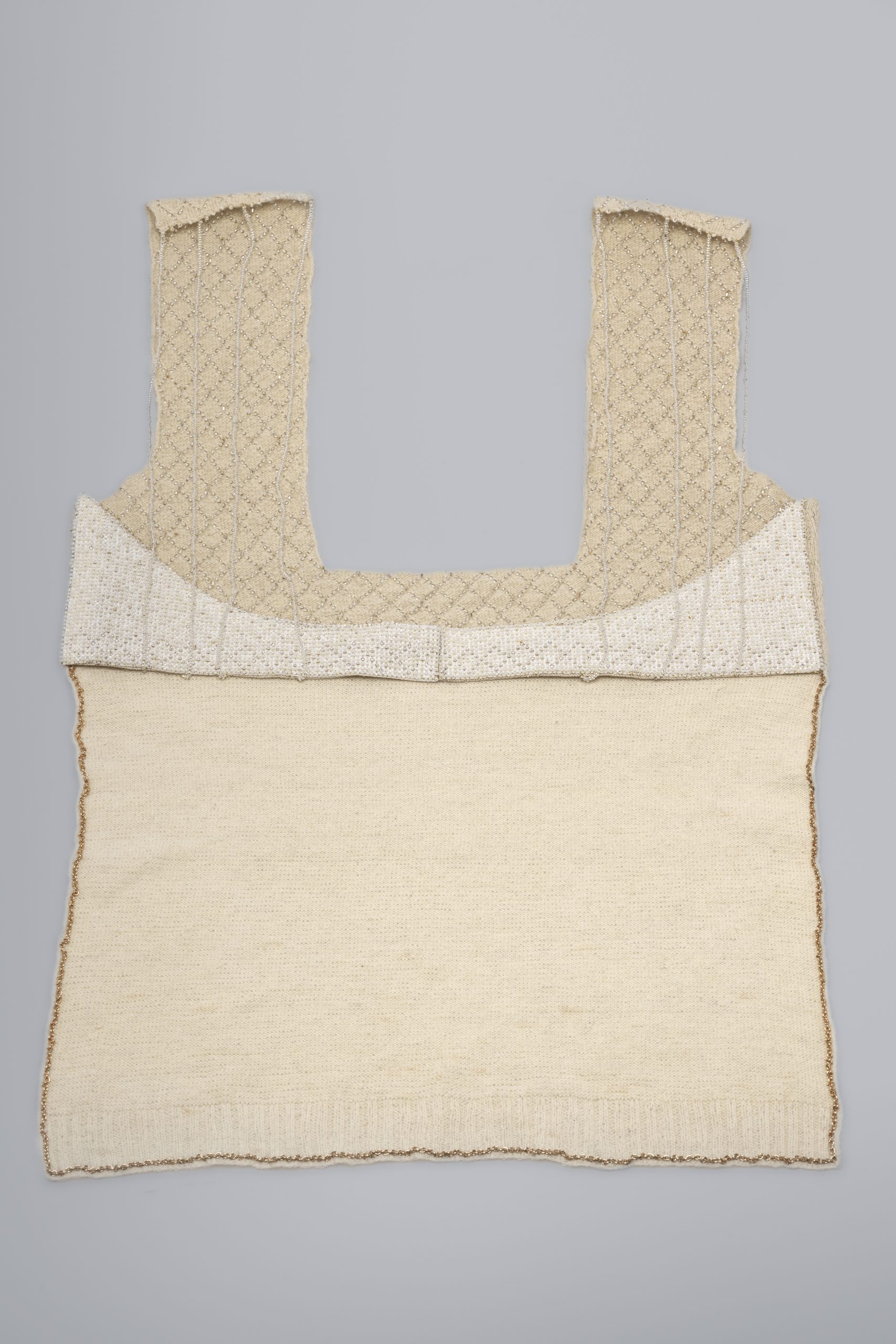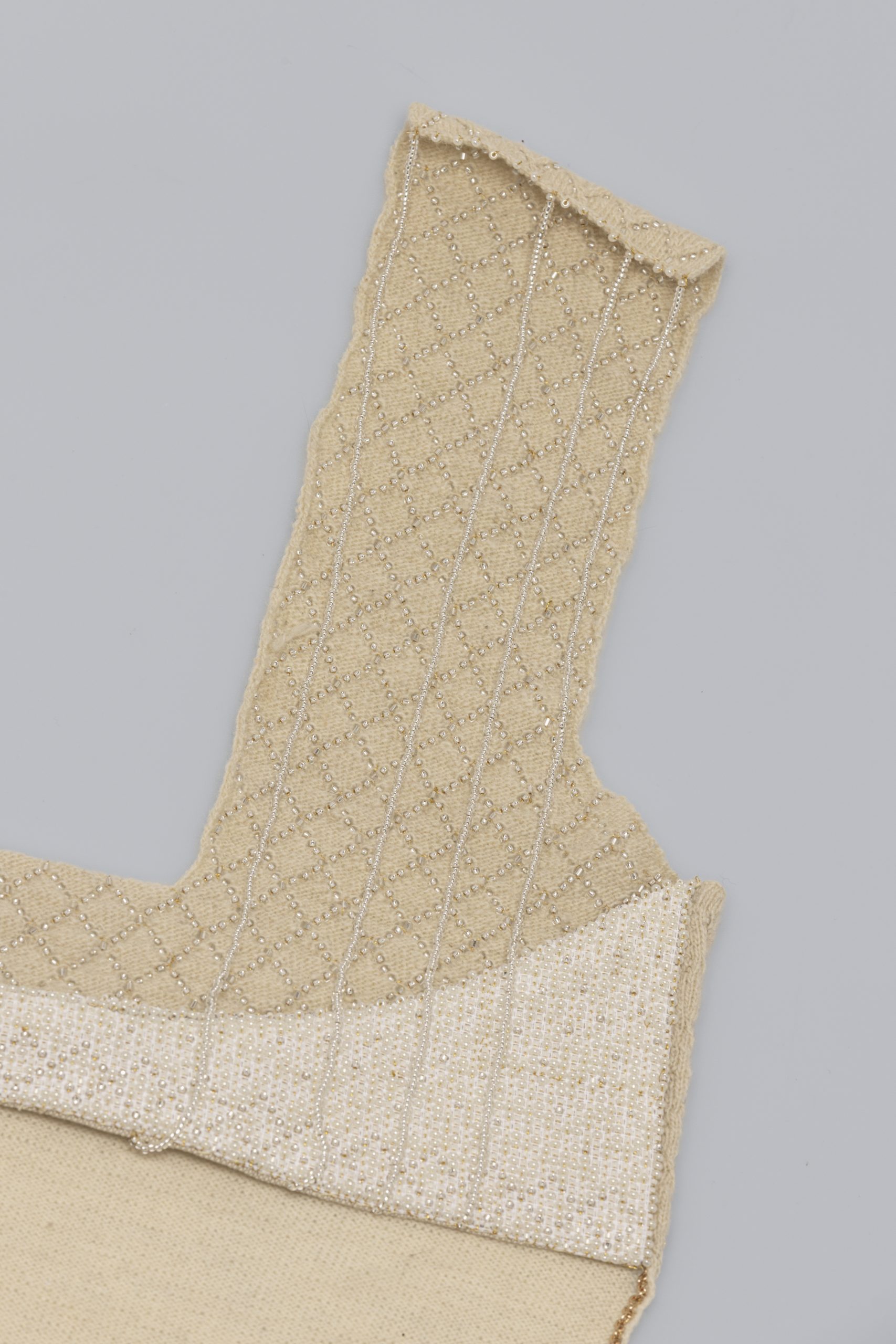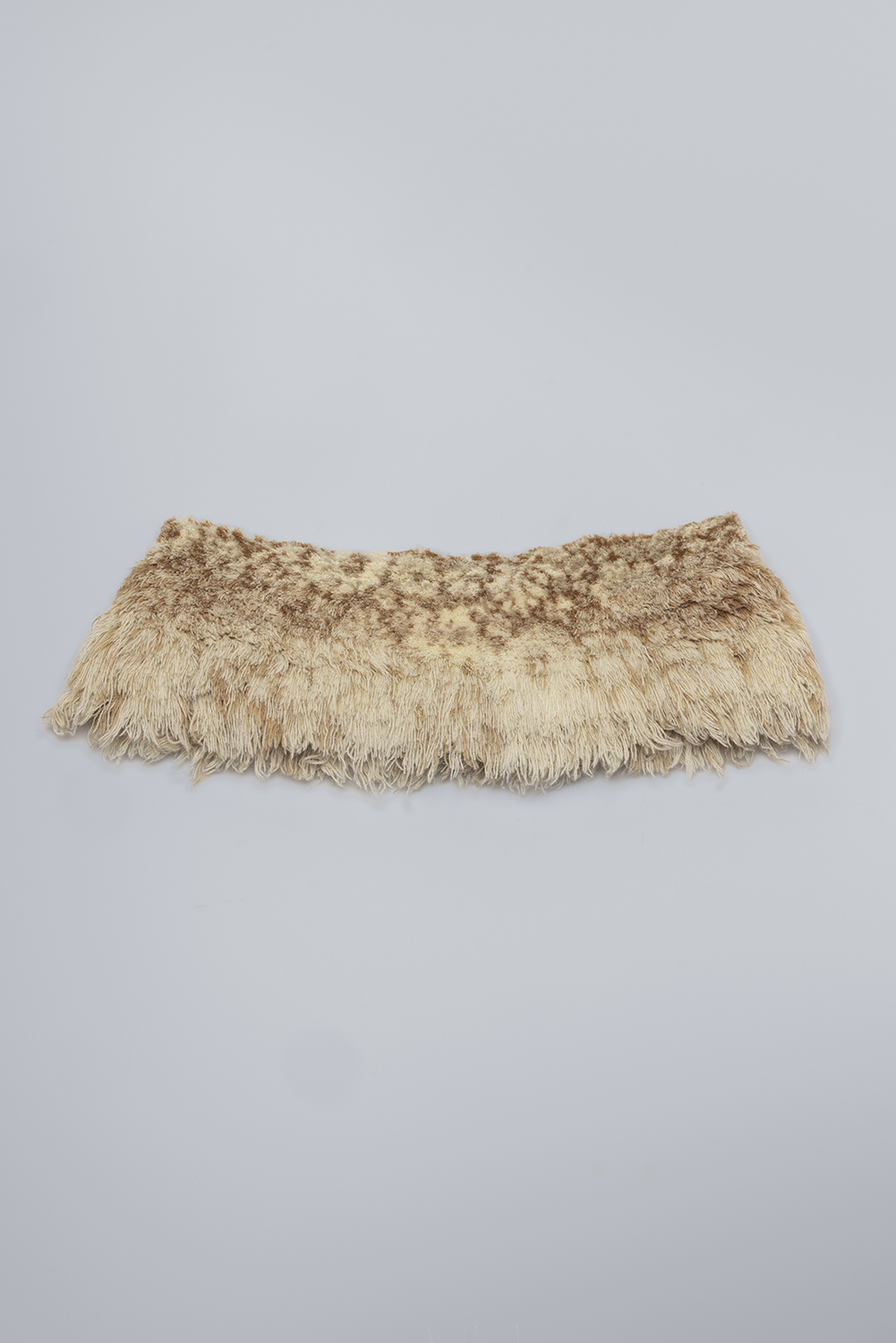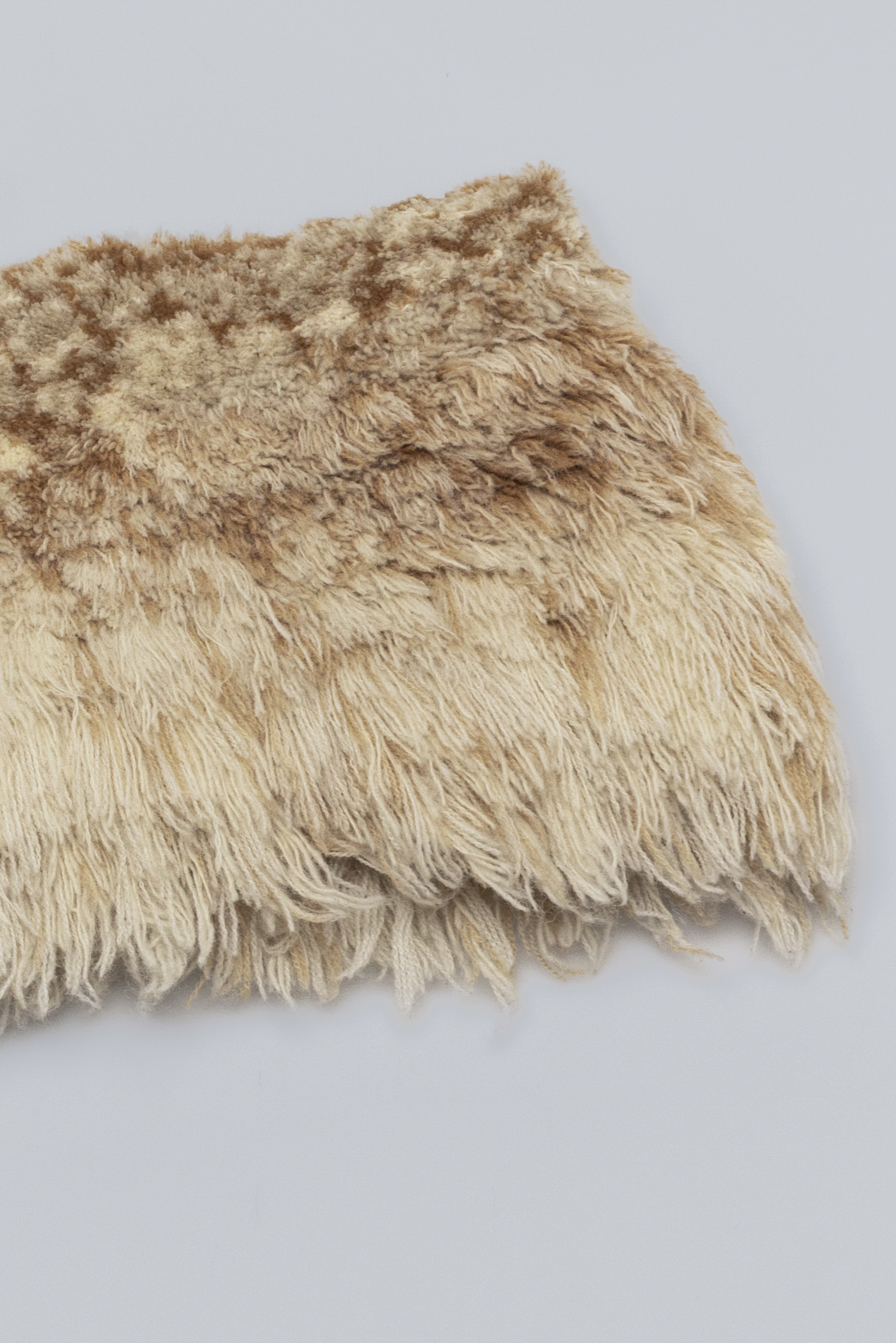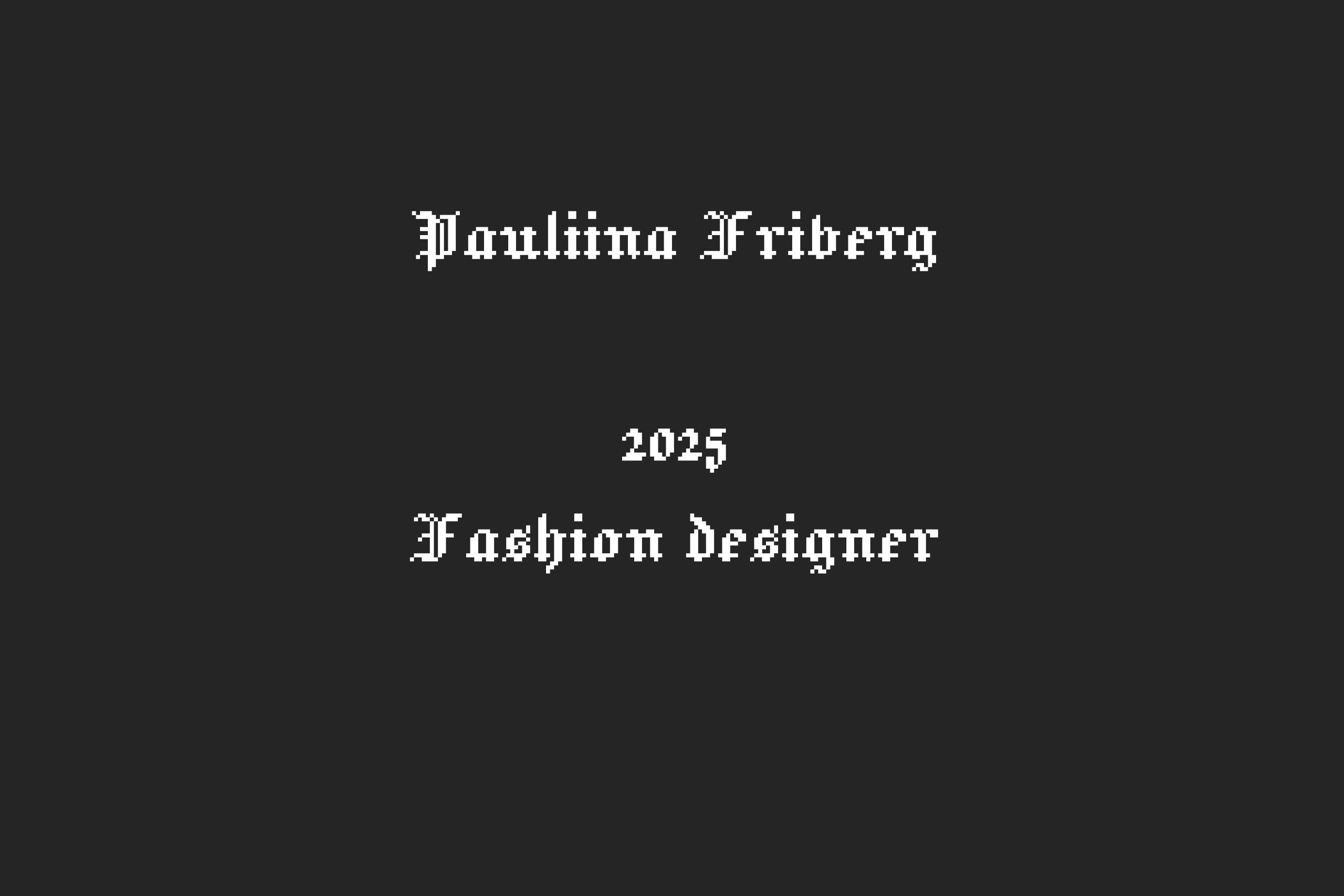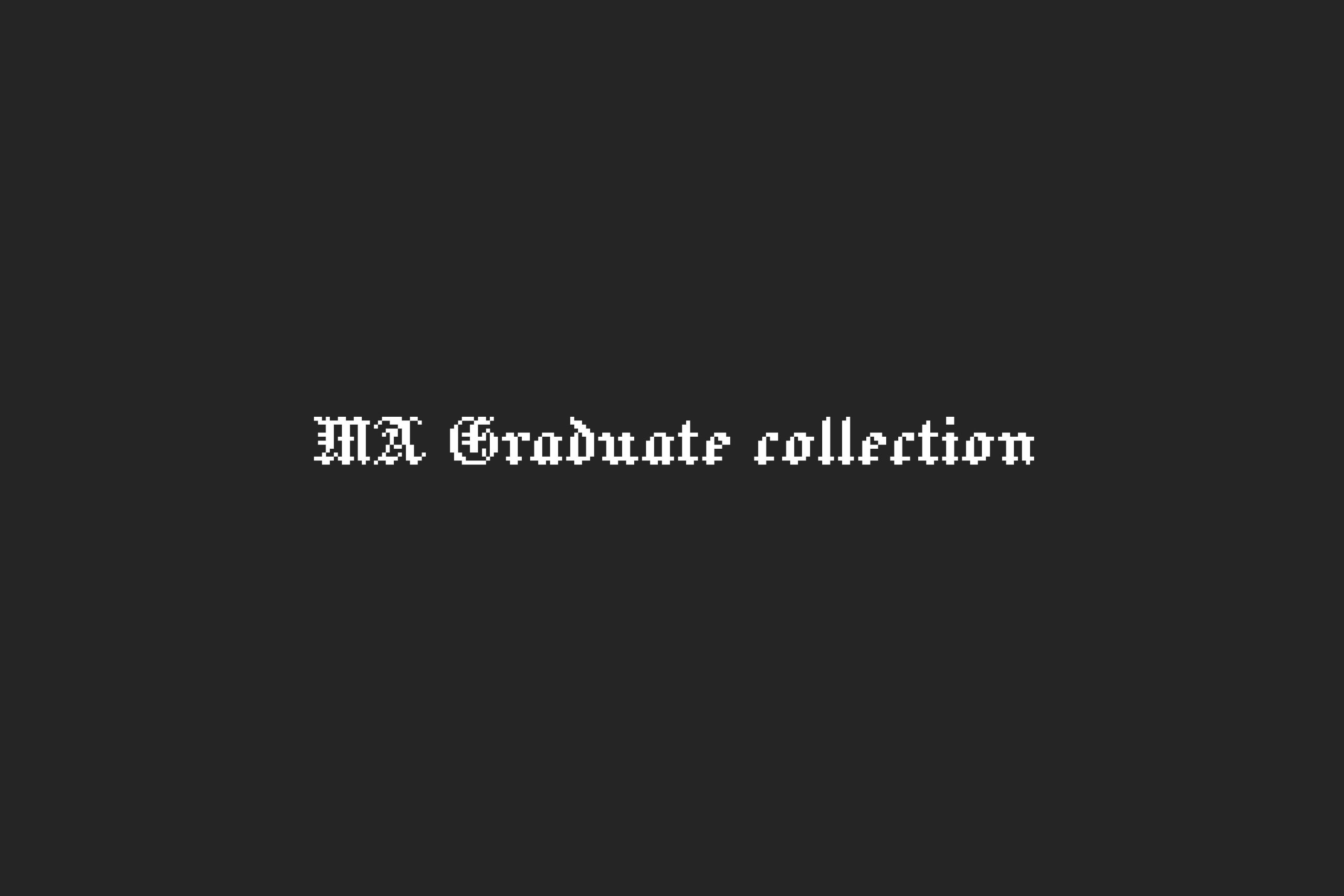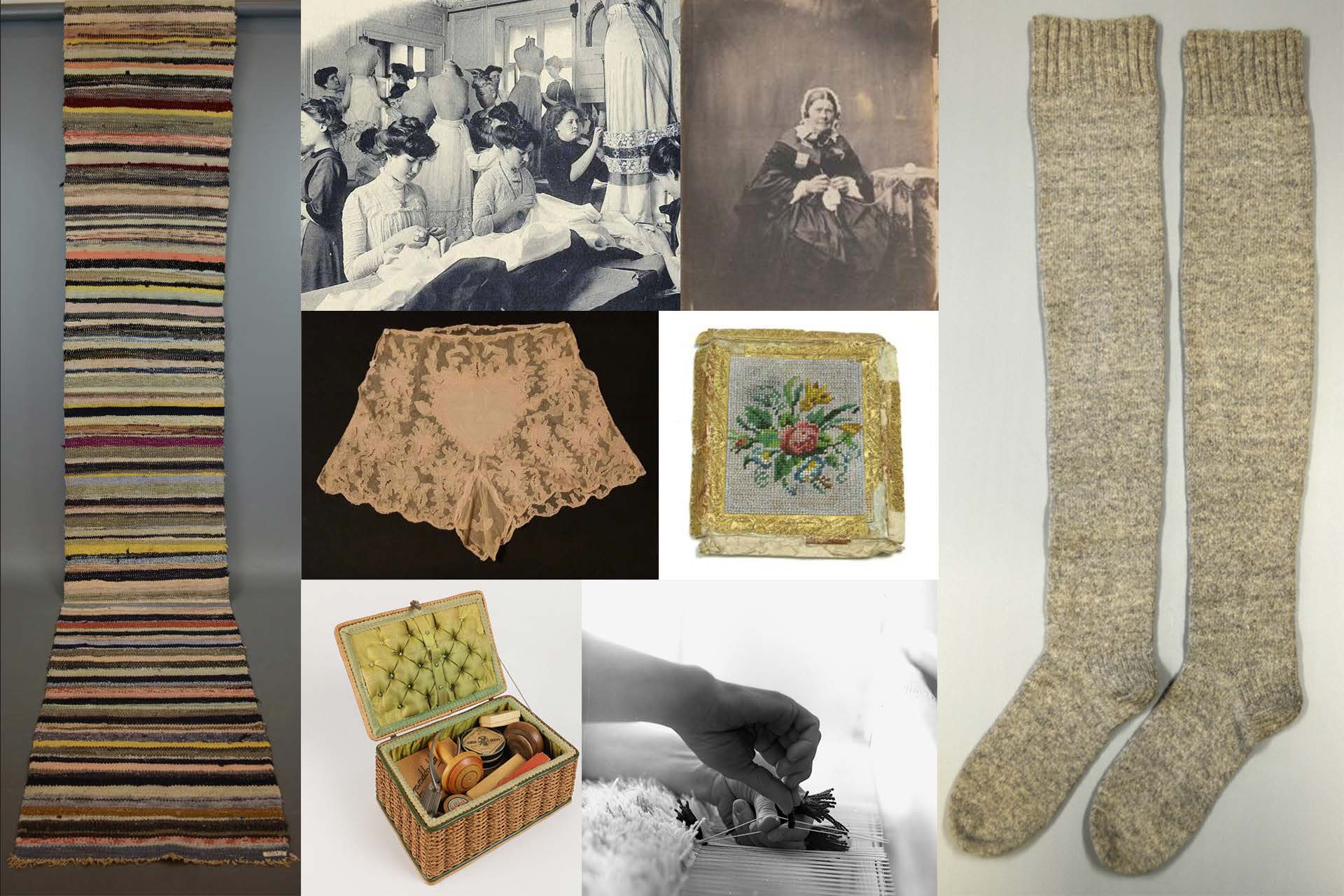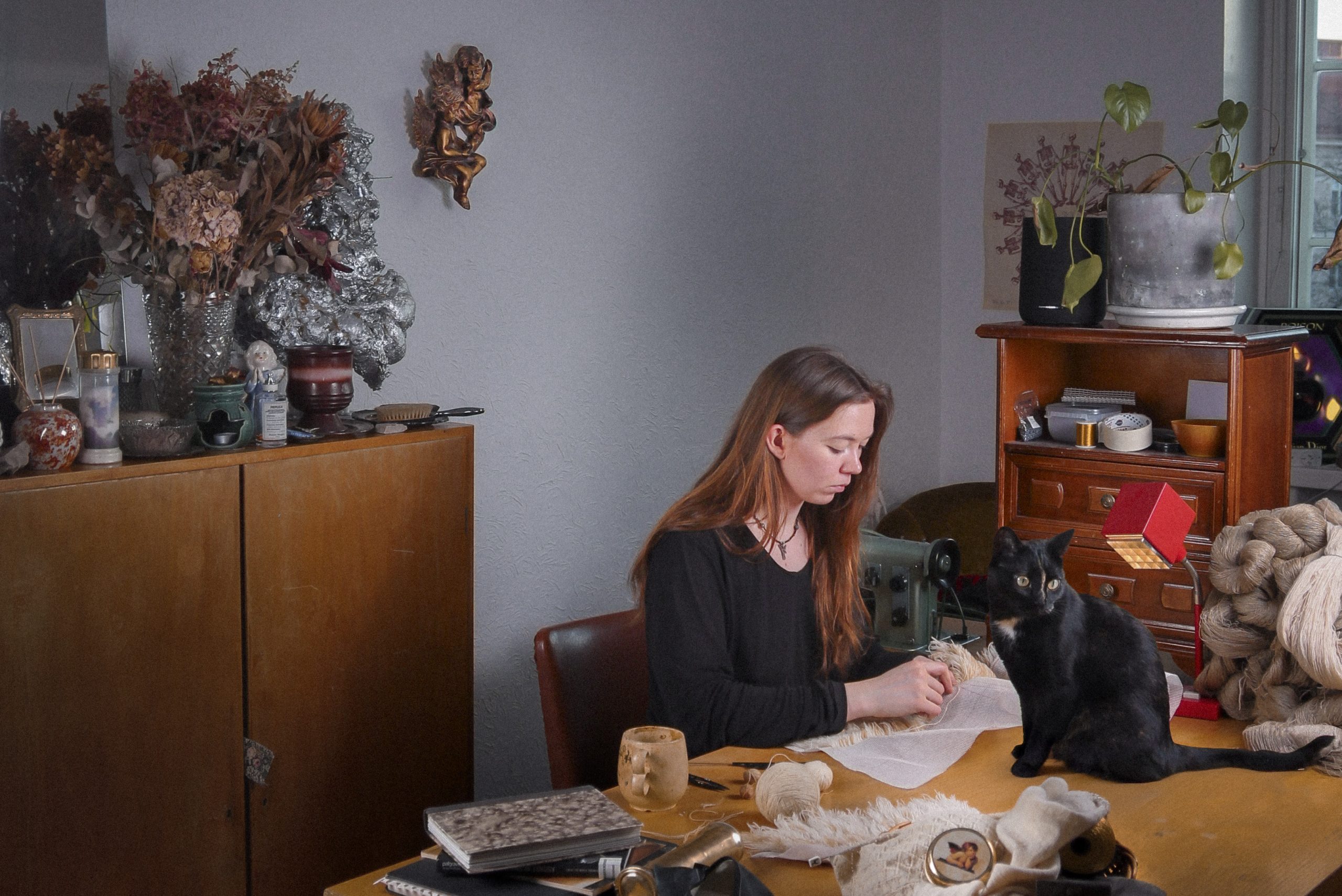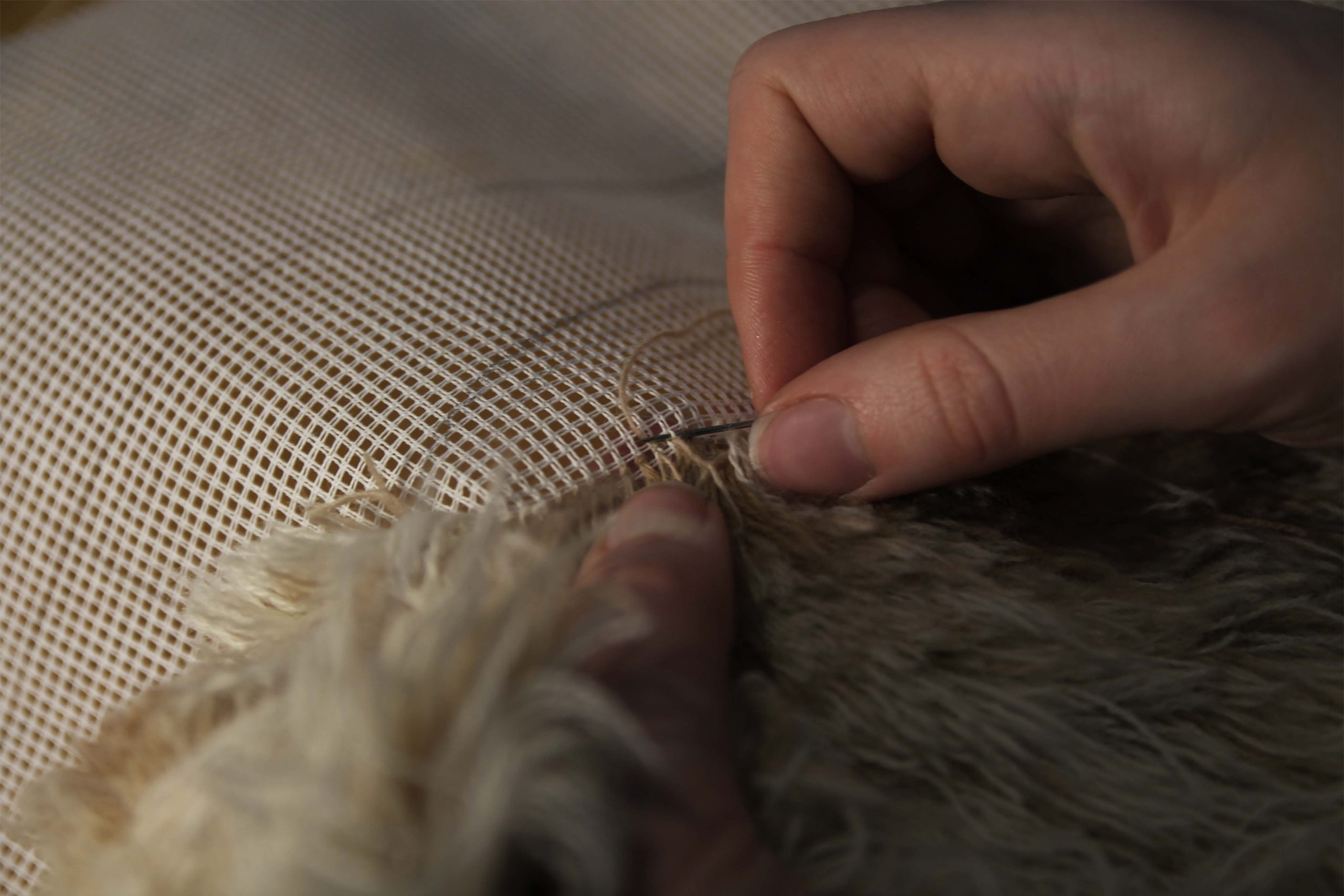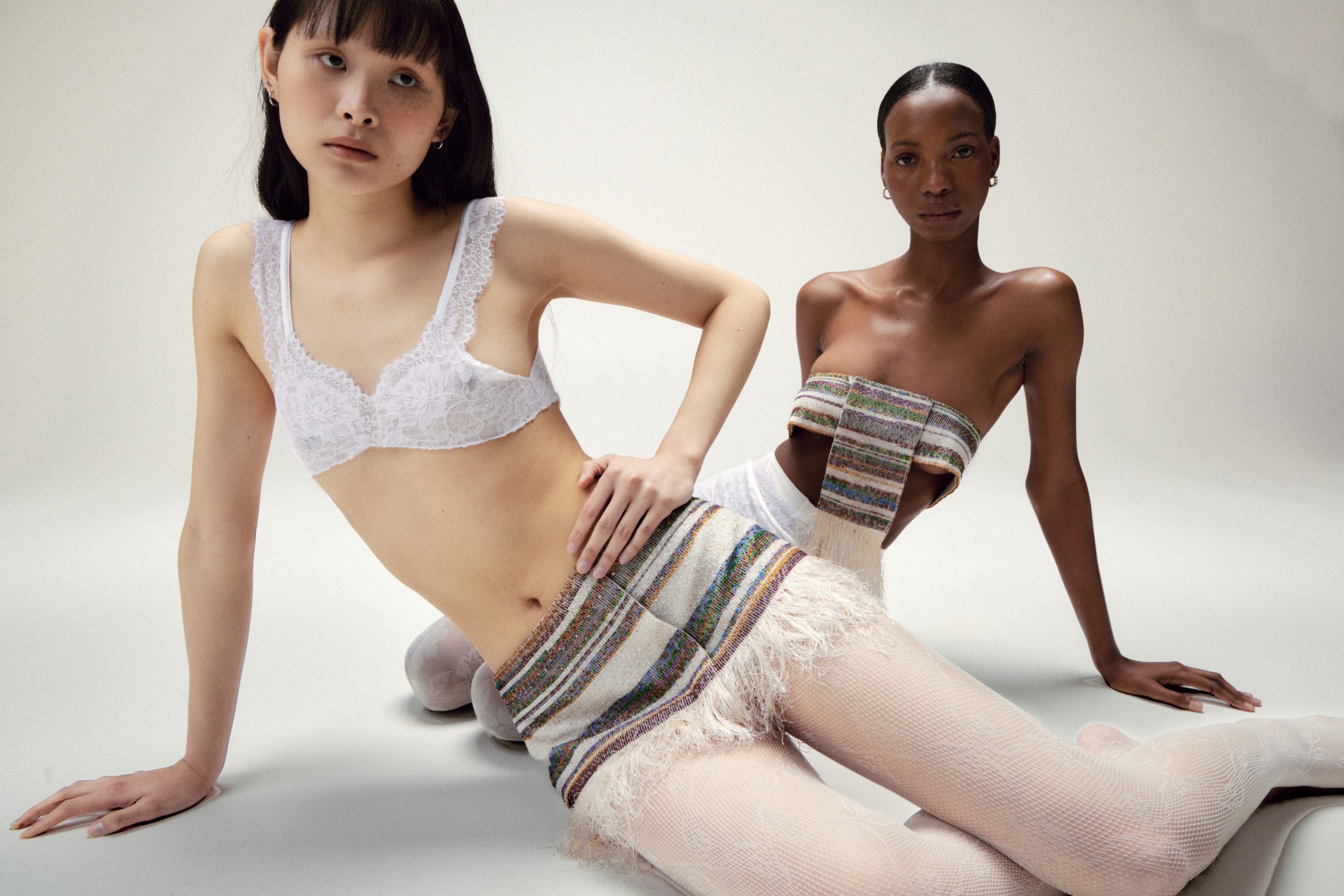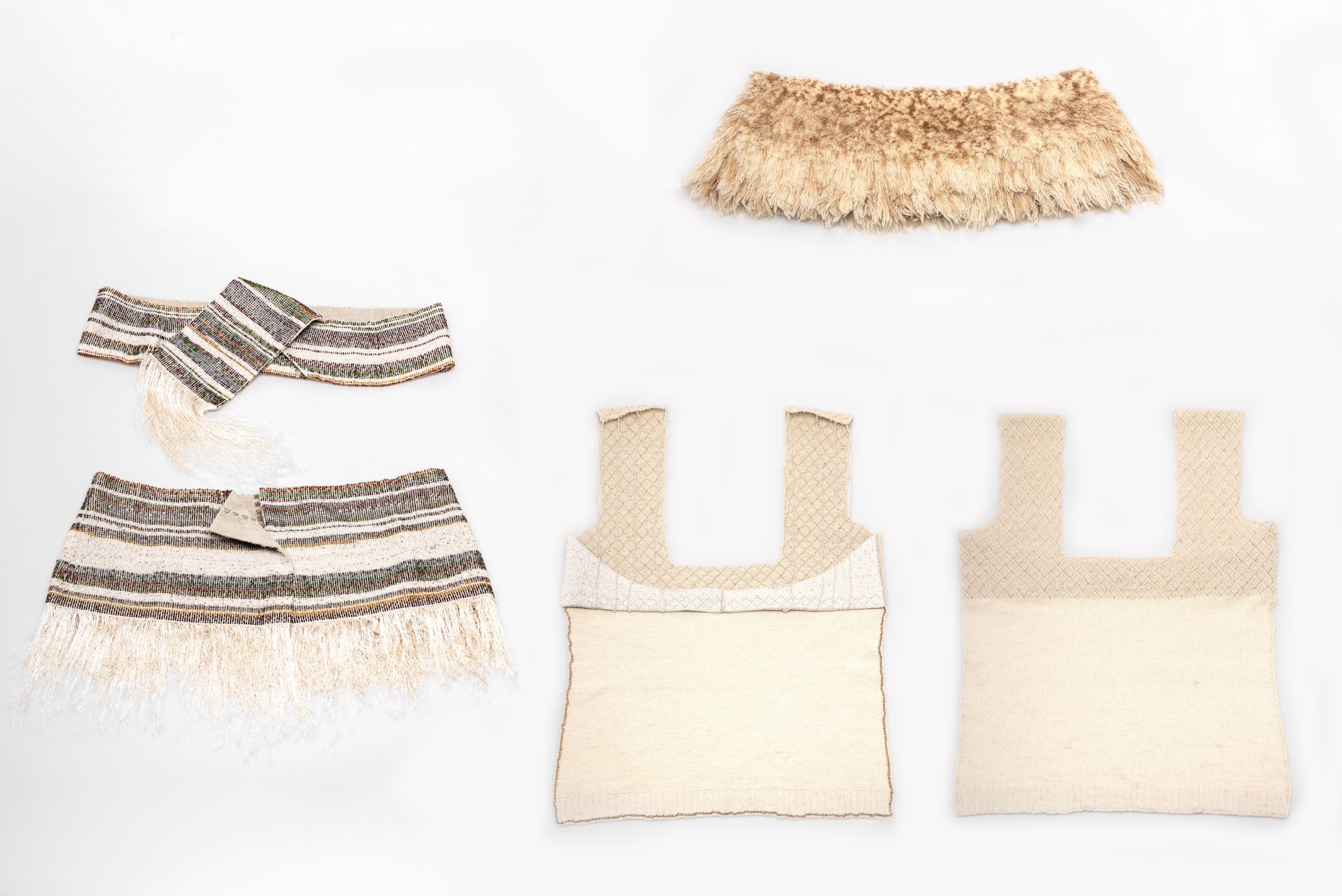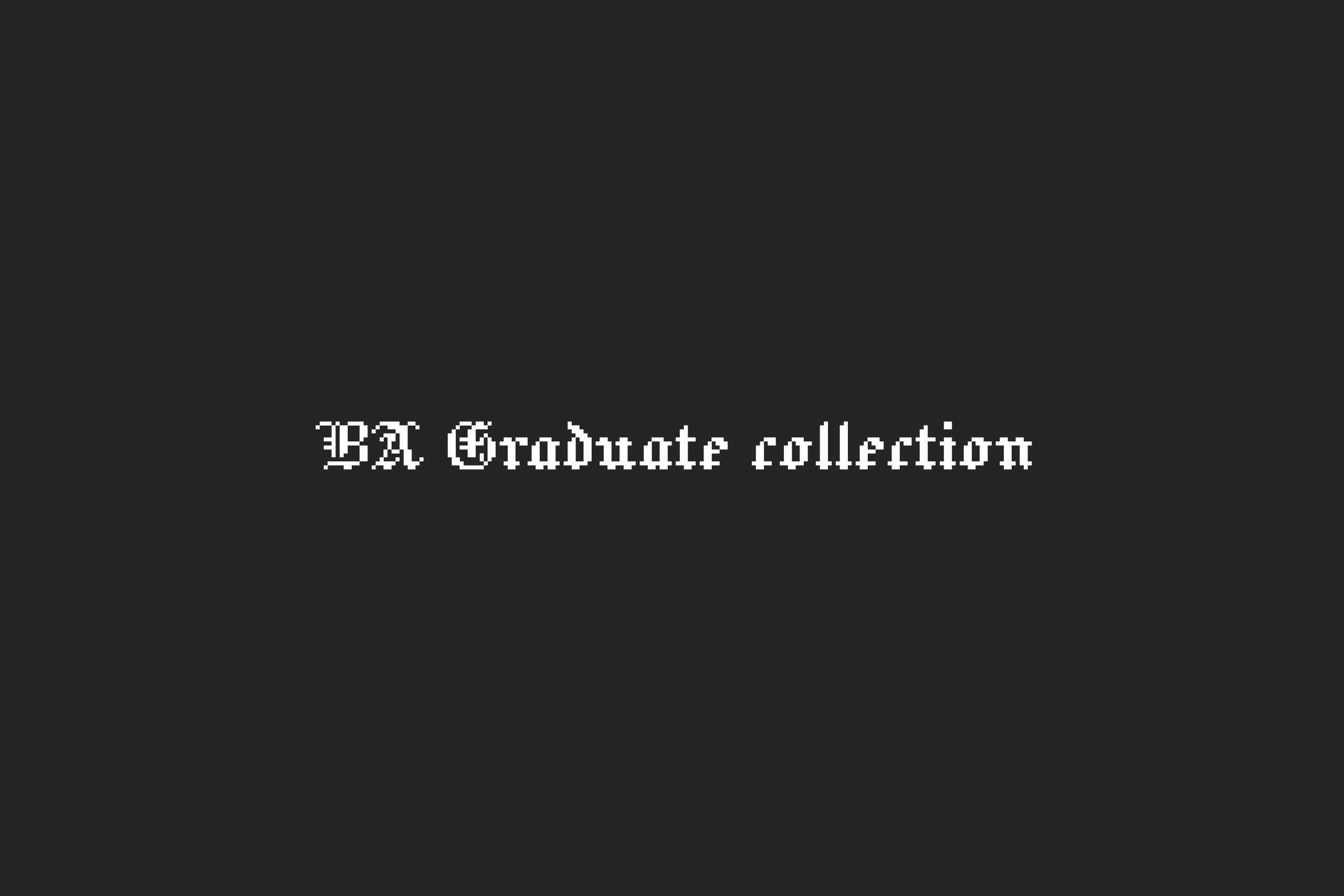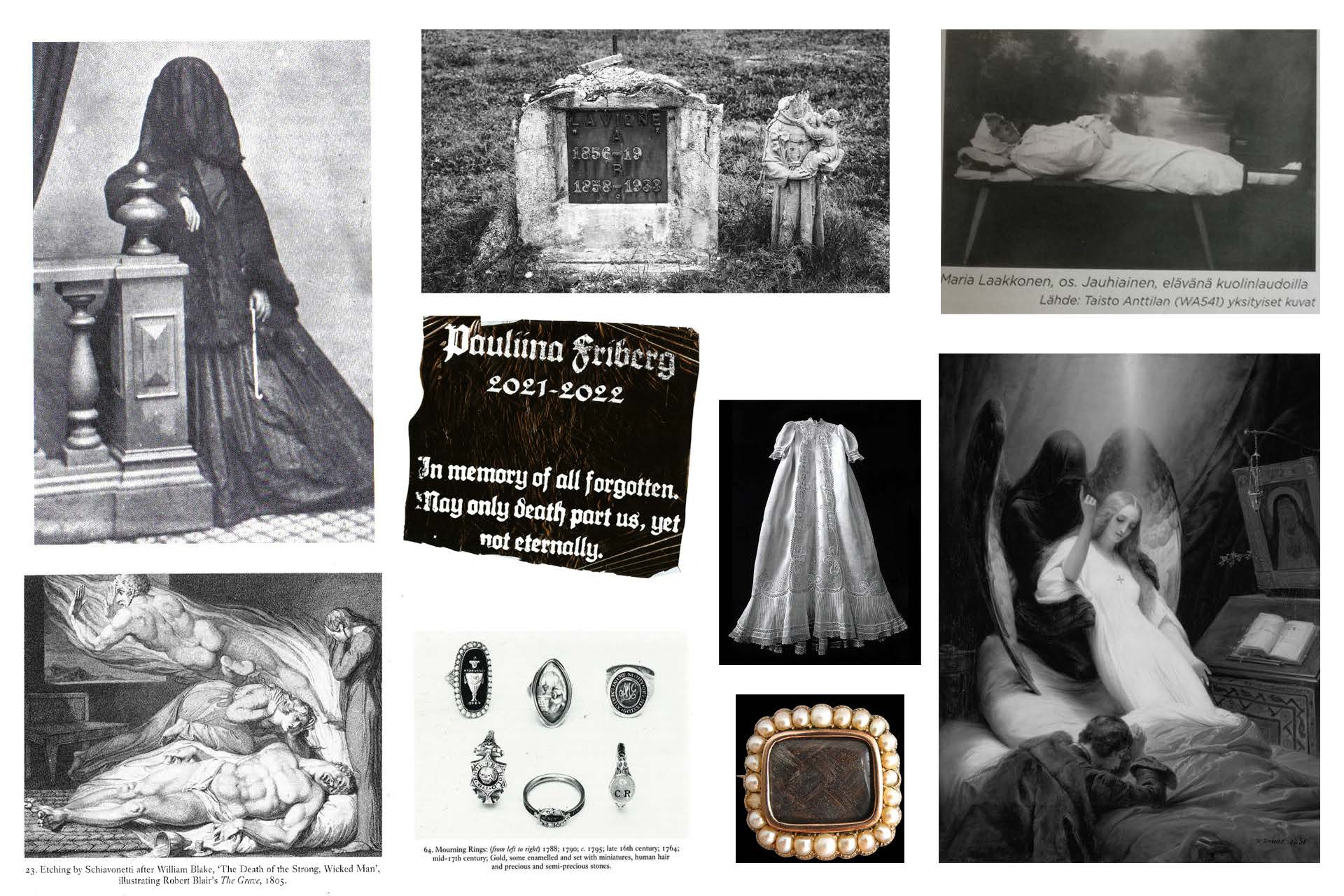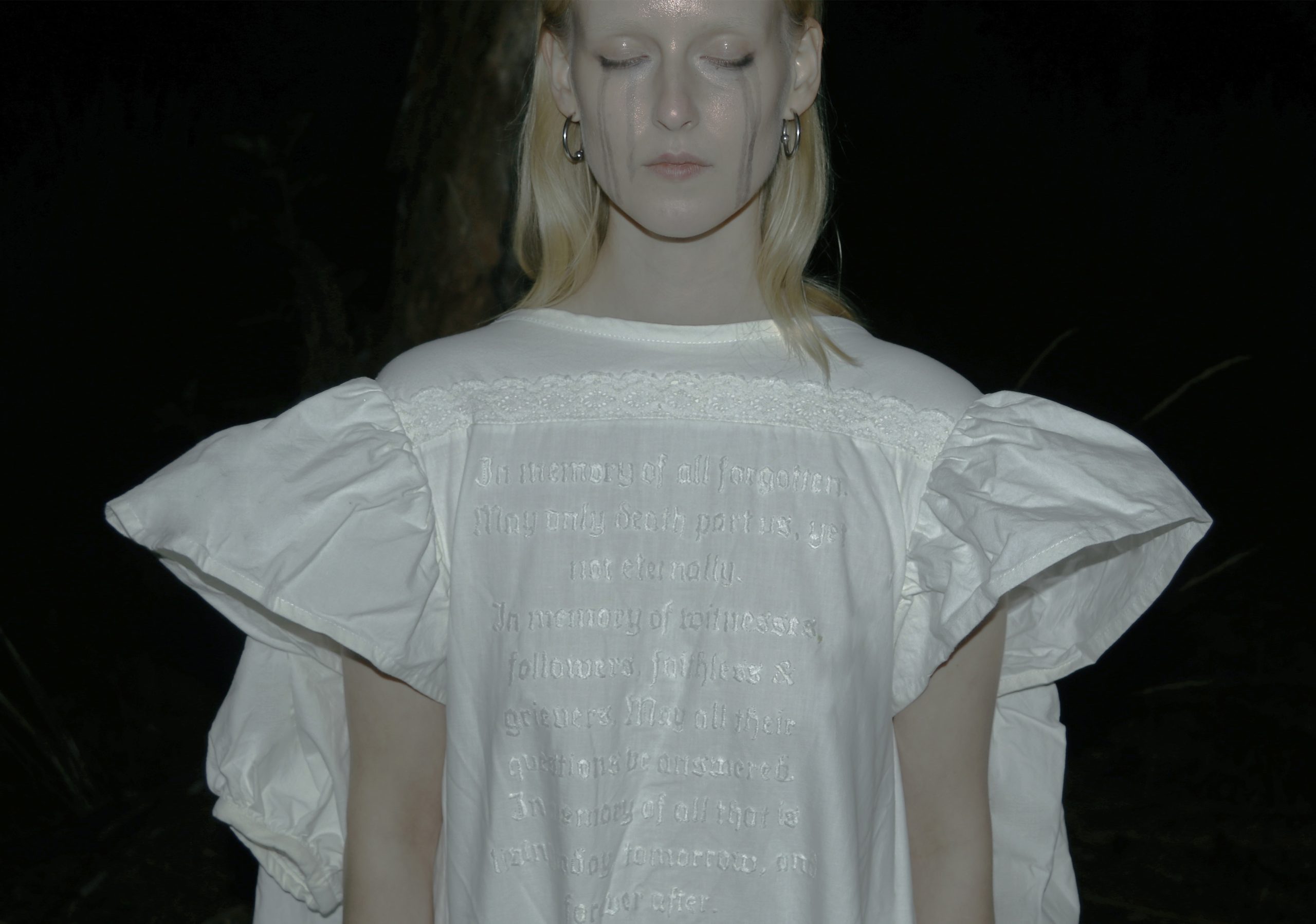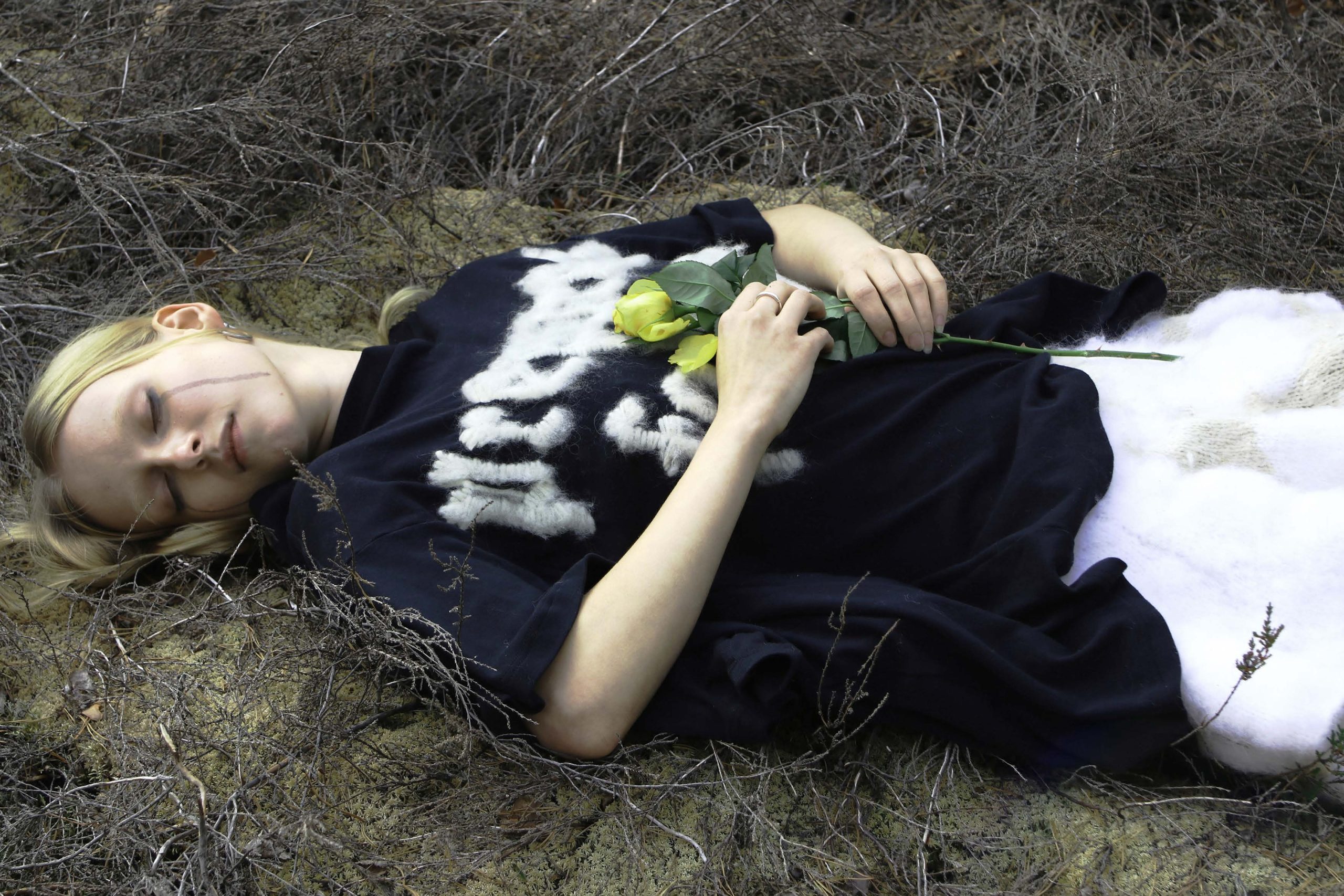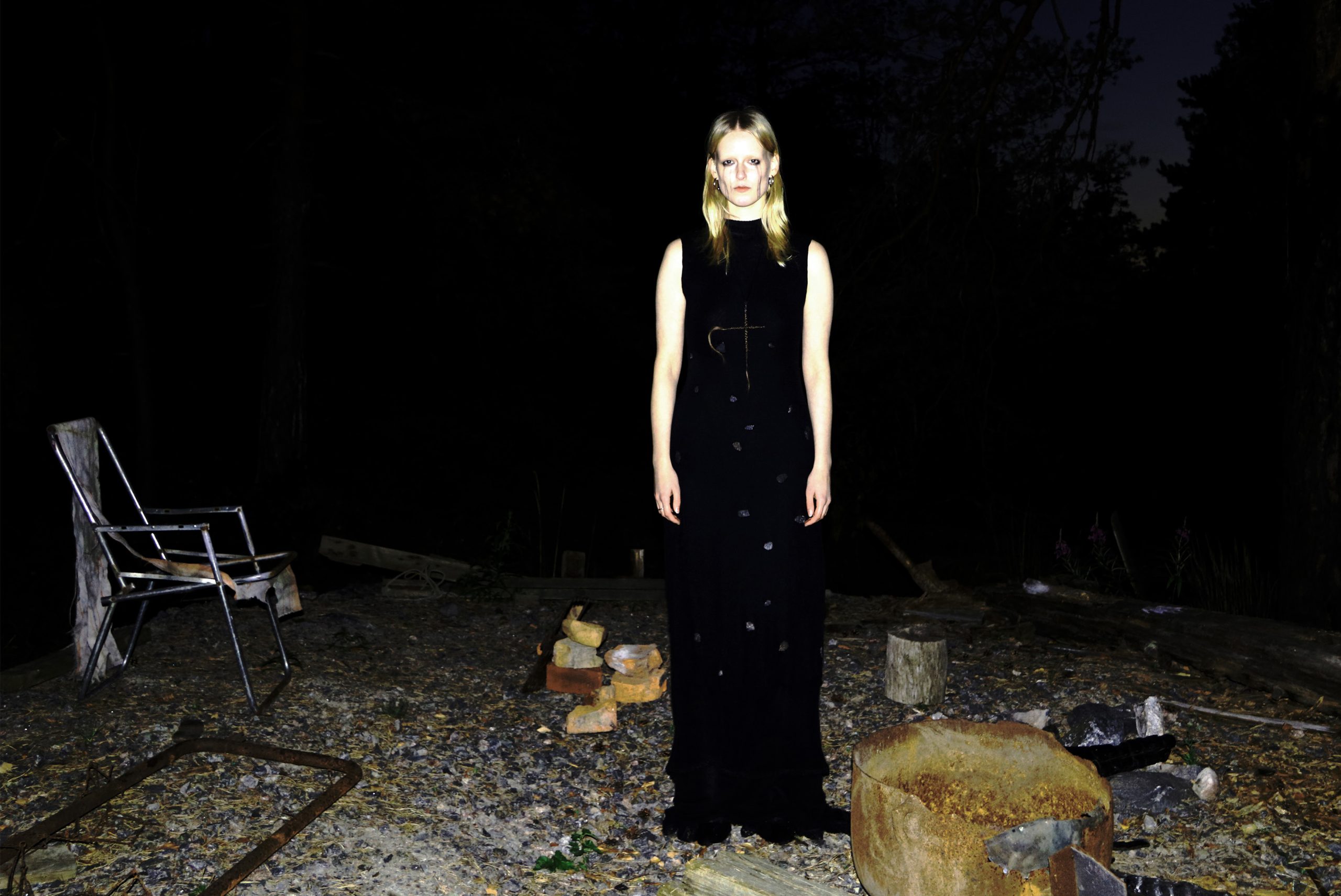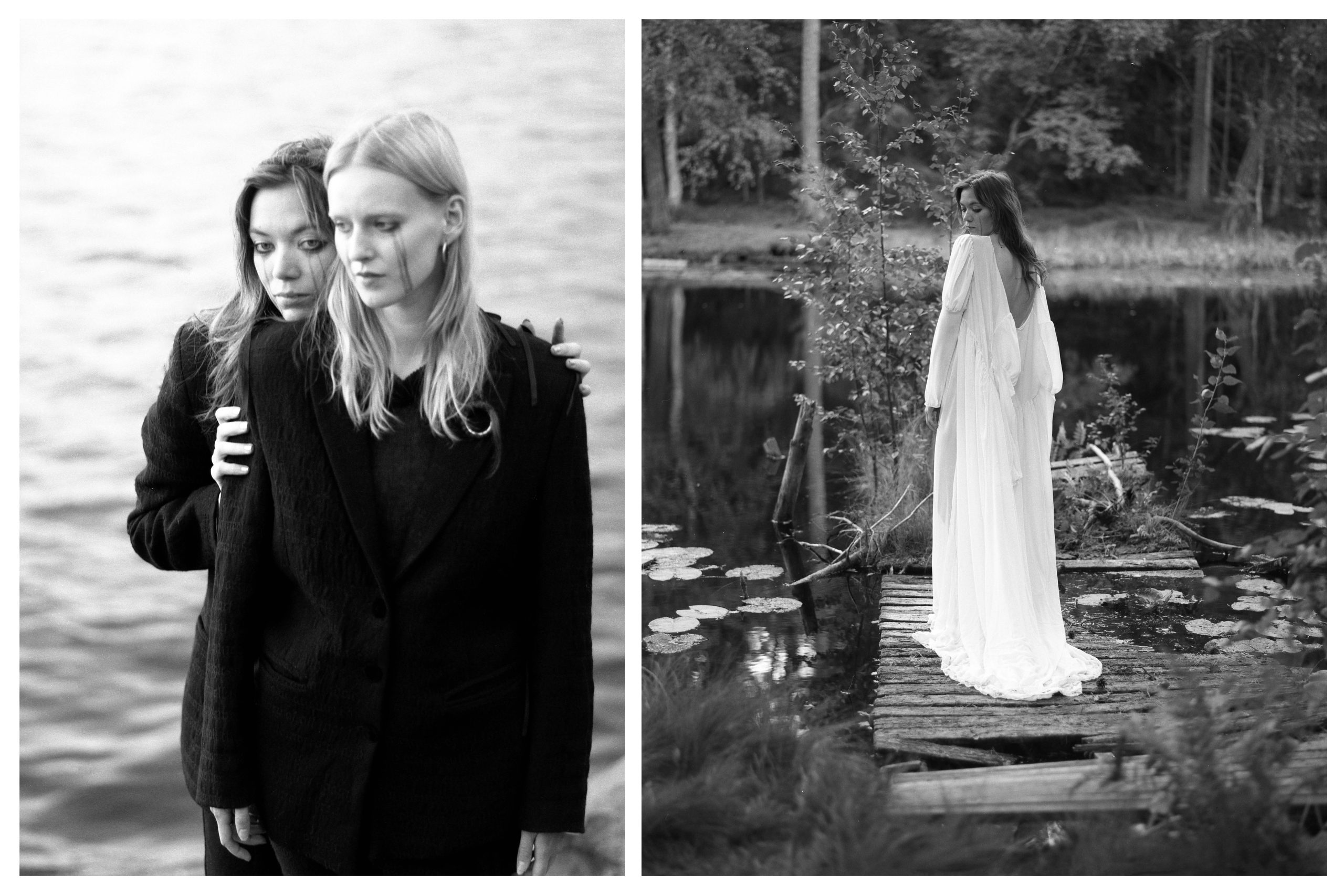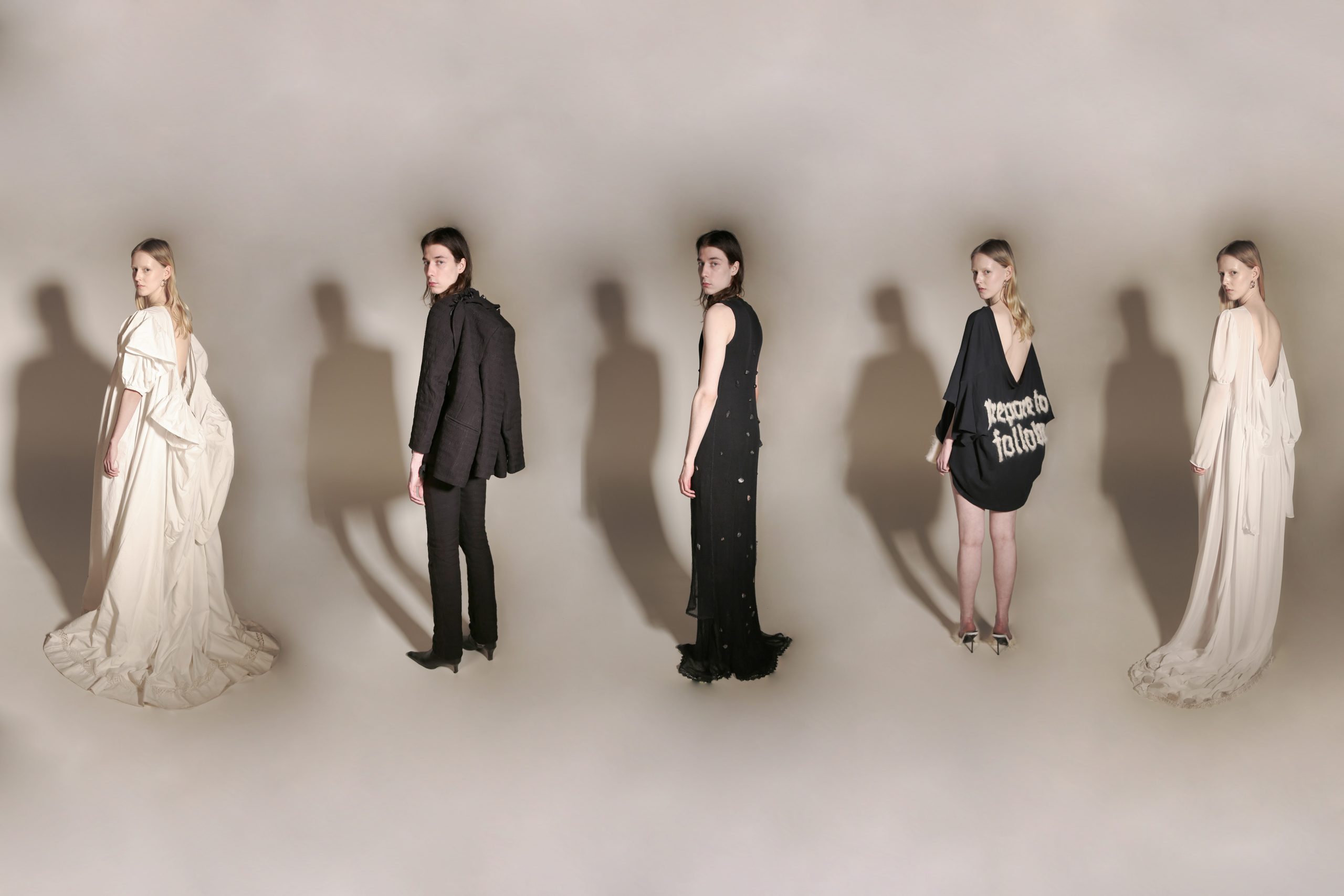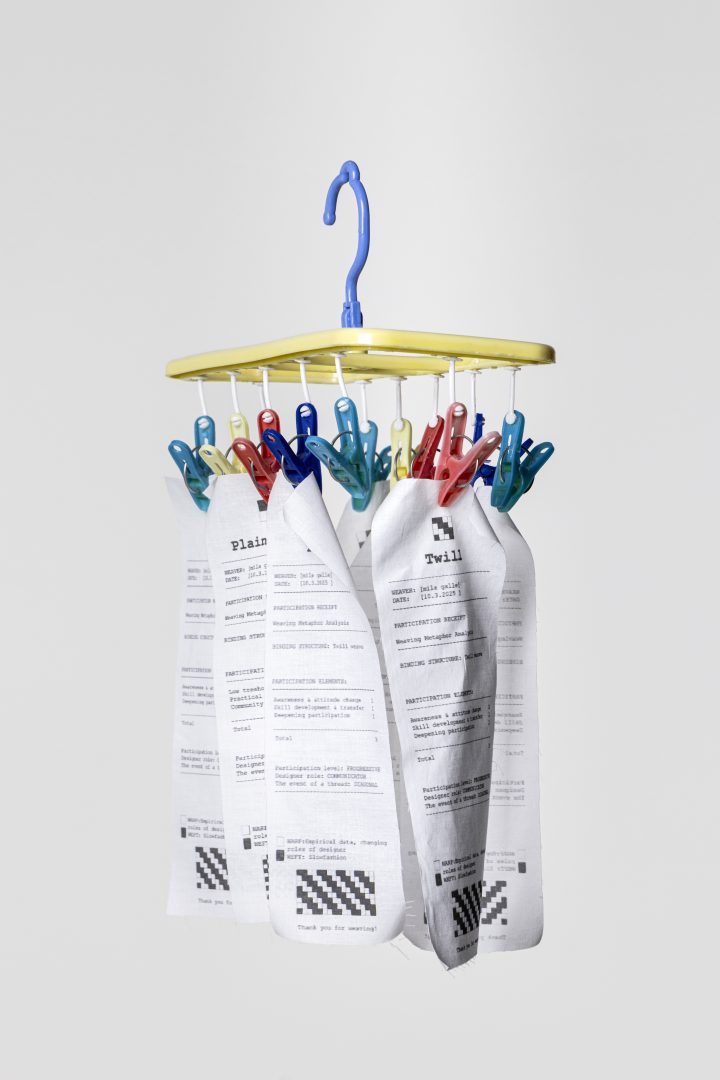Pauliina Friberg
(MA)
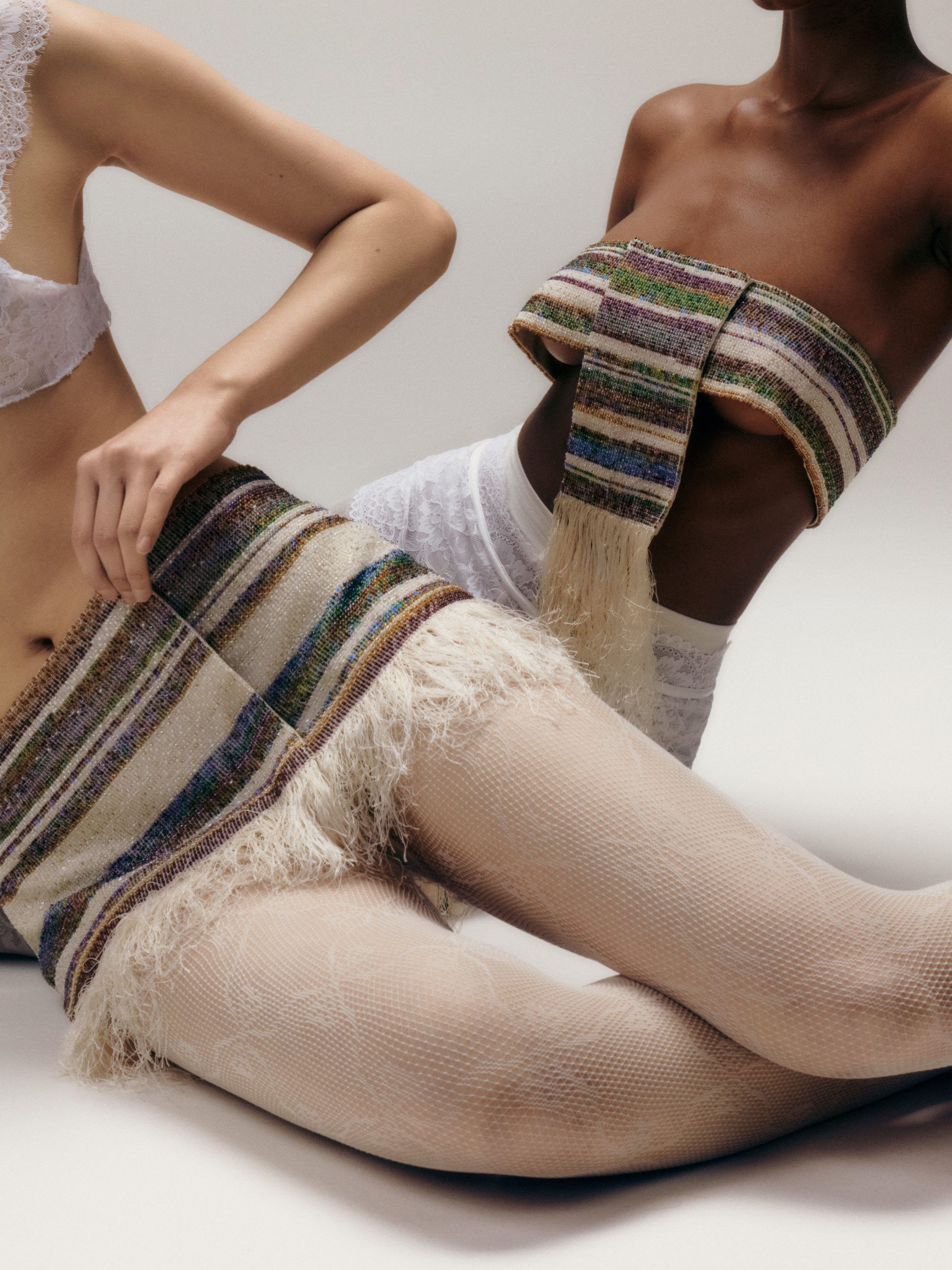
75,000 stitches, 50,000 beads and 30,000 knots later
The work focuses on traditional textiles, taboos in clothing and women as multi-talented domestic crafters. By immersing into the world of slow hand sewing, the designer researched the idea of luxurious and valuable clothing, and what brings value. The collection celebrates the cultural heritage of women in the past, who have developed the crafts for us to apply as our own. By repeating and reinterpreting traditional techniques and imagery, Friberg searches to answer the question: What is the line between couture and craft?
COLLABORATION
Photography: Sofia Kulianu
ADVISORS
Essi Karell, Elina Peltonen
SUPERVISOR
Kirsi Niinimäki
(IG)
@ fribergpauliina
75,000 stitches, 50,000 beads and 30,000 knots later, a small collection of four meticulously handcrafted garments has formed. Hundreds of hours of focused labour, storytelling through materials, and a deep commitment to the slow process is Pauliina Friberg’s way of researching her relationship to handmade clothes’ perceived value.
Friberg’s MA thesis explores the boundaries between fashion and crafts drawing inspiration from traditional Finnish rugs, tapestries and lace works both honouring, mixing, and recreating the original techniques. Using only her hand and needles to create the clothes, she invites the viewer to reflect on time, presence, and care. Her practice emphasises material intimacy—needles, threads and beads becoming vehicles of meaning and memory.
– The clothes serve as a tribute to the women before me who have developed the craft culture that I can now utilise and reinterpret.
The collection is not only a testament to patience and technical skill, but it challenges the viewer to reconsider the value of garments, not as disposable objects, but as repositories of time, labour, and intention. Each garment holds an invisible weight: the hands that made it, the hours it took, and the stories it carries. With every knot tied and every bead sewn by hand, the garments become quiet protests against speed, convenience, and invisibility in making. They are not only to be worn, but also to be witnessed.–My practice begs the question: what is the true cost of making something by hand? The answer, stitched into the fabric of each garment, is not simply measured in numbers, but in presence, persistence, and the beauty of things made slowly.
